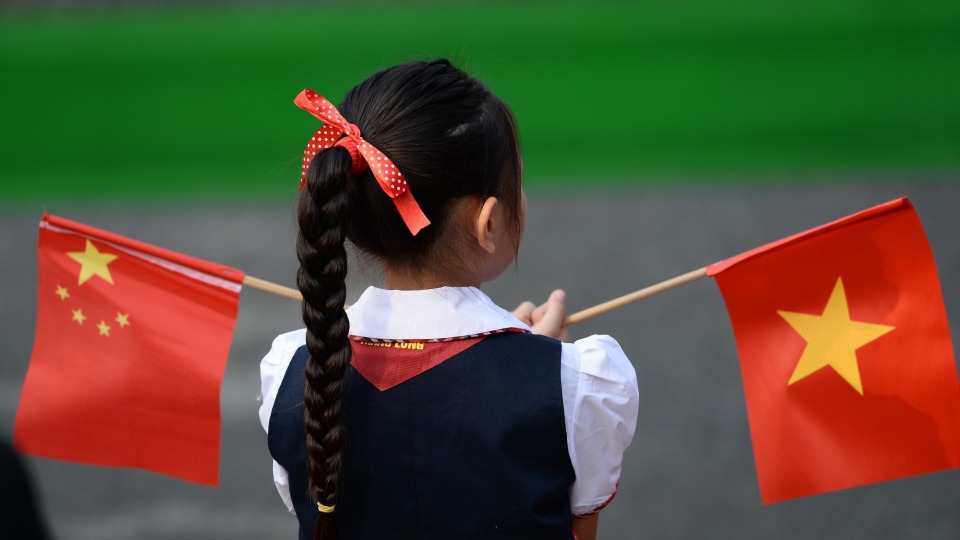
One of the oldest military and political strategies known to humanity is “divide and conquer,” which can be traced back to ancient Macedonia. In modern times, Nixon’s Secretary of State, Henry Kissinger, successfully used it to play China and the USSR off against each other to the advantage of the United States. Lately, the U.S. government has been trying to utilize it again, attempting to sow division between Vietnam and China. The hope in Washington is that Vietnam might be drawn into an anti-China coalition. These attempts have failed and will continue to do so.
The U.S. ruling class sees the rise of China as a threat to the unipolar, capitalist world order that prevailed after the Cold War and is desperate to draft countries into the anti-China camp. Recently, the U.S. corralled Australia into canceling a major weapons contract with France and into joining the U.S. and U.K. in the “AUKUS” nuclear submarine deal aimed at China. The U.S. government also sought to pressure Vietnam to allow construction of a U.S. naval base on Vietnamese territory, a move Washington seemed confident would be successful.
The reason the U.S. government was so optimistic it could pressure Vietnam to join its coalition was its reliance, once again, on the divide and conquer strategy. Vietnam and China have a long-standing territorial disagreement over the Paracel and Spratly Islands in the South China Sea (known in Vietnam as the East Sea). U.S. military planners believed this dispute could be used to drive a wedge between the two countries. However, the U.S. government fails to understand or refuses to respect, several important aspects of Vietnam’s foreign policy.

First and foremost, it’s a long-standing rule in Vietnam’s foreign affairs that Vietnam will not enter any military alliances, especially not ones aimed against another country. Further, the Vietnamese government has said on multiple occasions that it will not permit any foreign country to build military bases or facilities on its territory. These policies are pillars of Vietnam’s pursuit of peaceful coexistence with all countries, but they won’t deter the U.S. from continuing its efforts to pit Vietnam against China.
The Vietnamese government is firm in its pursuit of friendly relations with all countries, despite any disagreements they may have. In fact, the Association of Southeast Asian Nations (ASEAN) of which Vietnam is a leading member, recently affirmed that only peaceful means will be pursued to settle the various territorial disputes in the South China Sea.
If the above reasons weren’t enough to show that the United States was barking up the wrong tree, there is one other important reason. Despite any disagreements that may exist between the two socialist countries, the material reality is that the relationship between them is quite strong. This has become especially apparent in the last year, as there have been numerous high-level meetings between Chinese and Vietnamese government officials and between representatives from the two respective Communist Parties that govern the countries.
In April 2021, after the Vietnamese elections, President Xi Jinping of China spoke with President Nguyen Xuan Phuc of Vietnam. In that conversation, Xi spoke about how the two governments must aid each other as they work to build socialism in their countries. Later in the same month, China’s defense minister, Sr. Lt. Gen. Wei Fenghe, visited Hanoi, where he met with his Vietnamese counterpart, Sr. Lt. Gen. Phan Van Giang.
At this meeting, Giang stated that maintaining a strategic partnership and defense cooperation was important for both countries. At the end of the meeting, the two ministers oversaw the signing of a Memorandum of Understanding between the two militaries. This is not the behavior of two forces that want conflict with each other, no matter how much the United States government might wish it was so.
Then, at the end August, hours before U.S. Vice President Kamala Harris arrived in Vietnam for an official visit, Vietnamese Prime Minister Pham Minh Chinh met with the Chinese ambassador in Hanoi, Xiong Bo. At this meeting aspects of Vietnamese and Chinese relations were discussed, including inter-party ties, foreign relations, and security links. Most notably, the two officials discussed the need to be “on guard” against any foreign forces trying to divide and create conflict between their two countries.

The timing and content of this meeting was no accident; it was a clear message to Harris that any attempts to pit the countries against one another will not succeed.
More recently, at the beginning of September, China’s Minister of Foreign Affairs, Wang Yi, visited Hanoi for high-level talks with members of the Vietnamese government. At a meeting with Chinh, Wang was told by the prime minister that it’s a leading priority of the Vietnamese government to continue to develop the relationship between the two countries and the two governing Communist Parties.
Just last week, on Sept. 24, Xi Jinping, who is also the General Secretary of the Communist Party of China (CPC), spoke with his Vietnamese counterpart, Nguyen Phu Trong, General Secretary of the Communist Party of Vietnam (CPV). In this conversation, the two spoke about working together to continue the ever growing trade and economic ties between China and Vietnam, fighting the COVID-19 pandemic, and ensuring peace in the South China Sea. Xi added that it was in both countries’ interest to work together to safeguard their socialist systems.
The ties between China and Vietnam have their complications, as do all relationships between sovereign countries. However, the picture that the anti-China powers would like to paint of two countries on the brink of war is simply fantasy at best or a lie at worst. Those in Washington banging the drums for a new Cold War probably won’t stop trying to incite conflict between Vietnam and China and draw Vietnam into their anti-China club.
They fail to understand, however, that such a conflict goes against the policies of the Vietnamese government, the principles of the Communist Party of Vietnam, and the best interests of the Vietnamese people.










